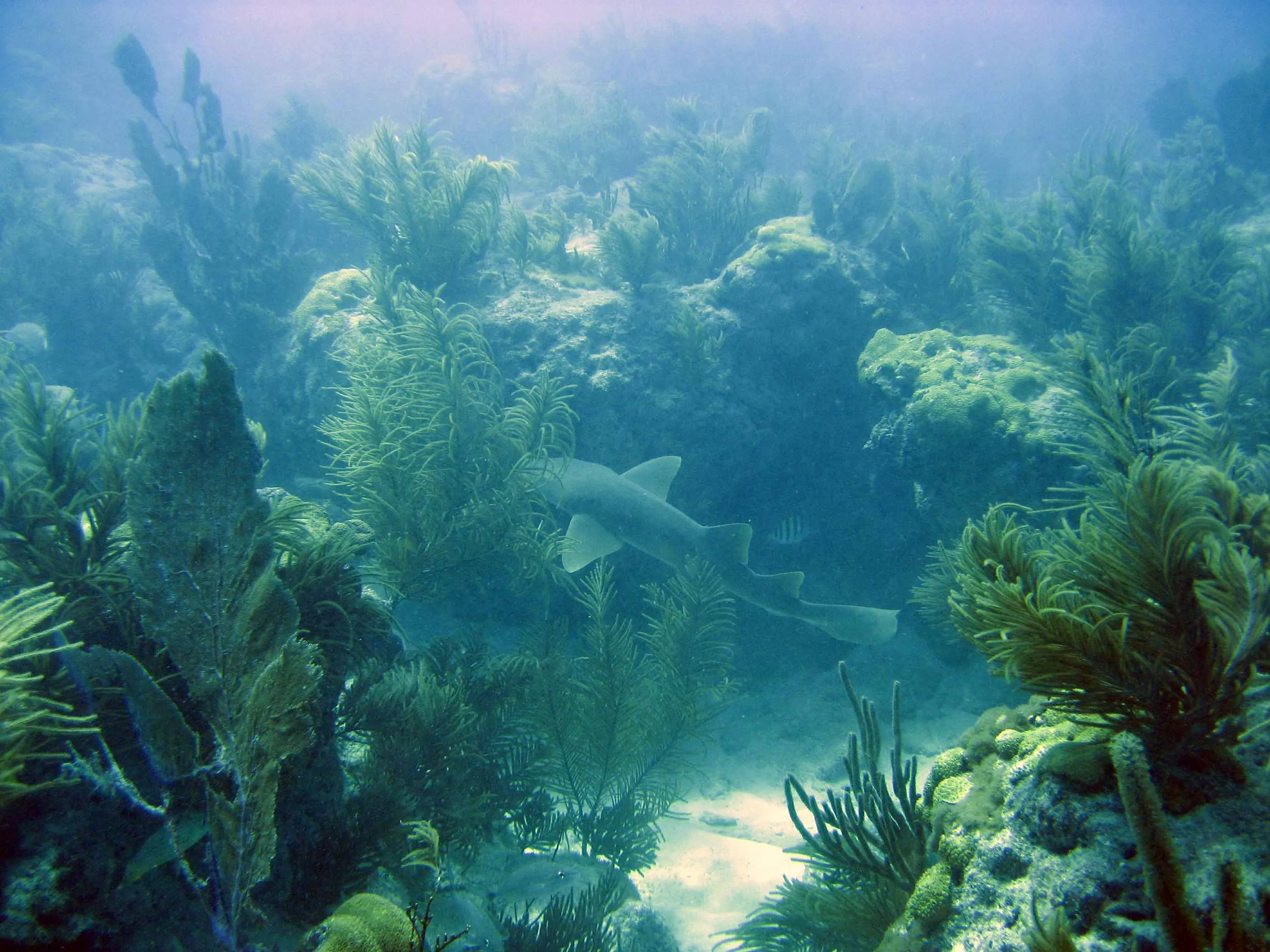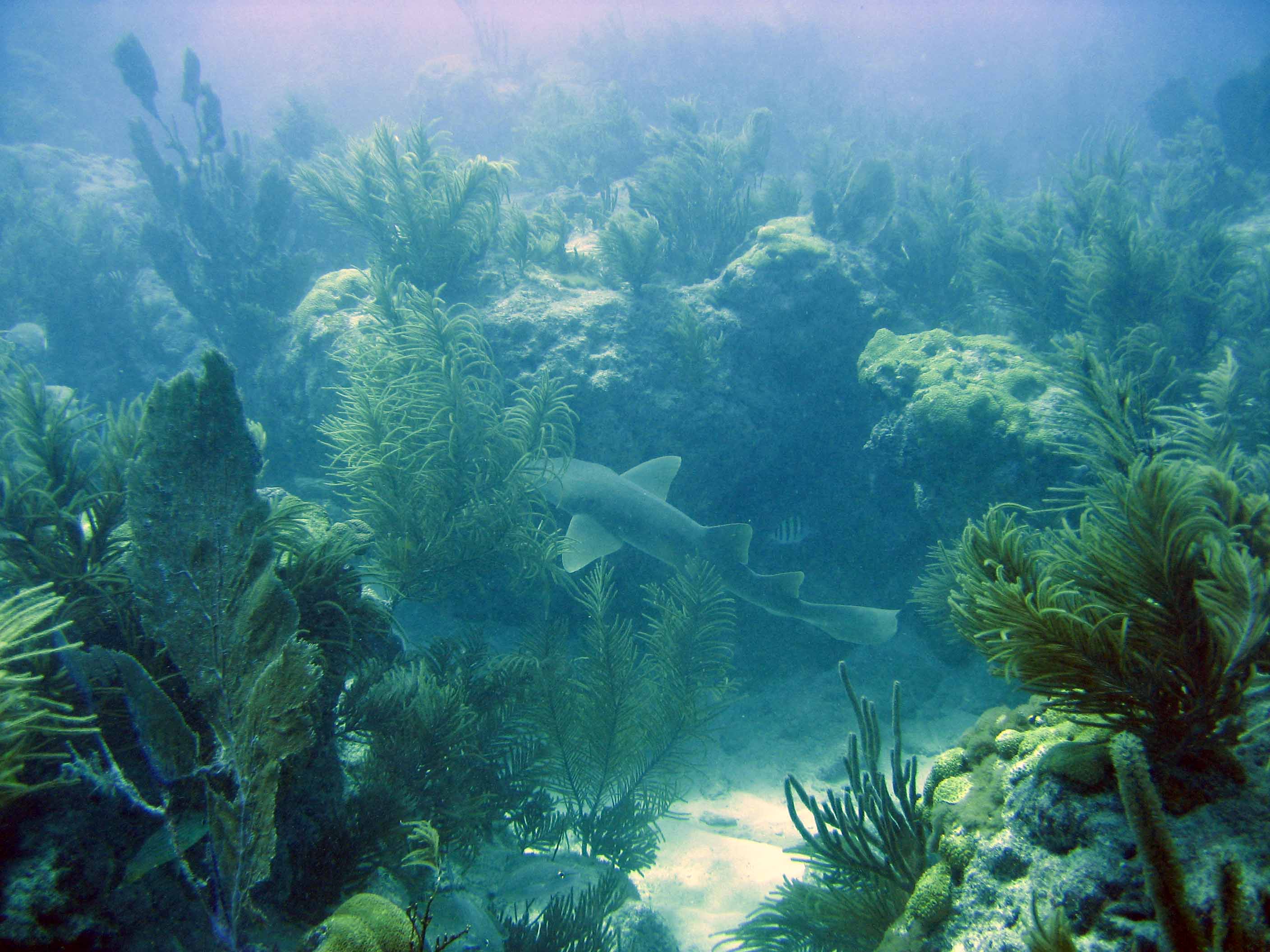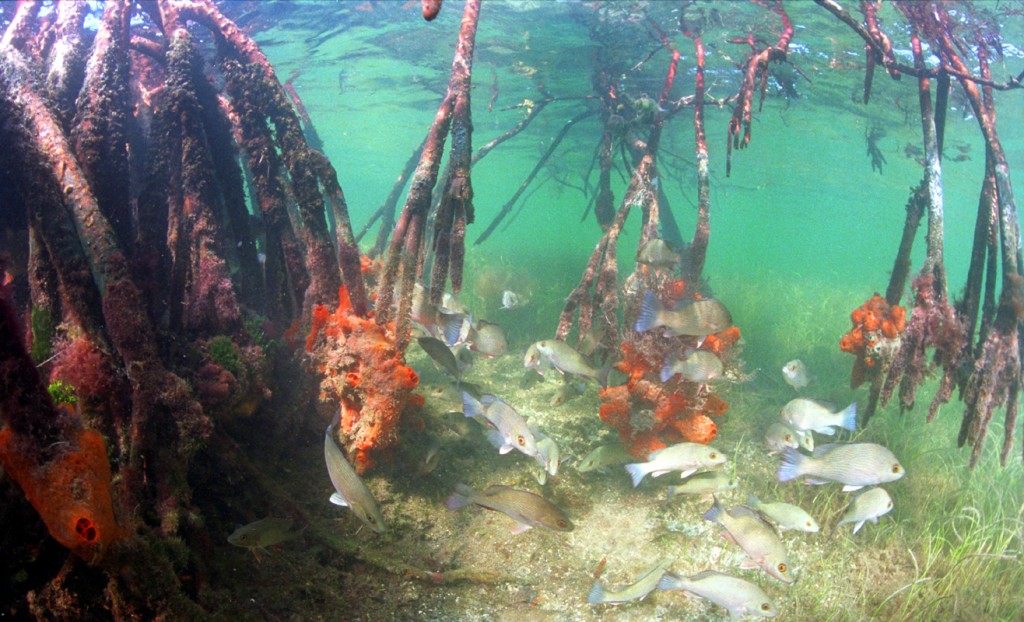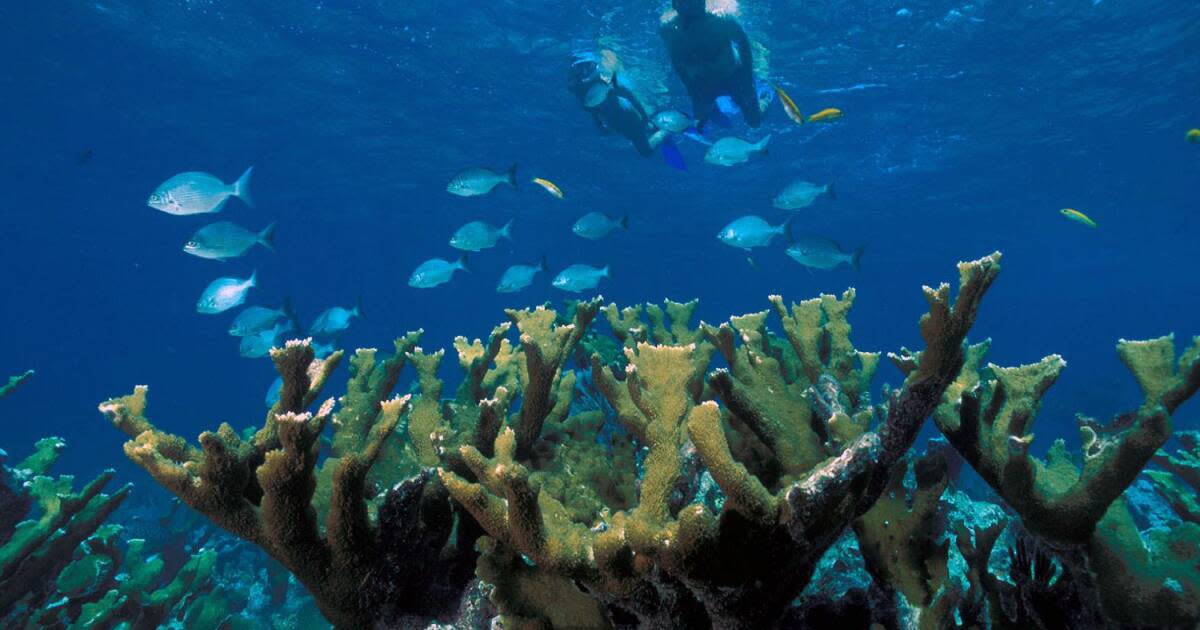
Facts About Biscayne National Park: 15 Amazing Discoveries Every Visitor Should Know
Just 20 miles south of Miami lies one of America's most extraordinary national parks - a place where 95% of the landscape exists underwater. Biscayne National Park protects vibrant coral reefs, historic shipwrecks, and pristine mangrove forests that have captivated visitors for decades. From ancient Tequesta settlements to modern-day snorkeling adventures, these facts about Biscayne National Park reveal why this aquatic wonderland deserves a place on every nature lover's bucket list.
Explore more amazing destinations at Nature Guests
America's Underwater Wilderness

A nurse shark glides through the pristine waters of Biscayne National Park
Among the most fascinating facts about Biscayne National Park is that it represents America's largest marine national park, with an astounding 95% of its 172,971 acres existing underwater. This unique characteristic sets it apart from every other national park in the United States, creating an aquatic wonderland that can only be fully appreciated through snorkeling, diving, or boating.
Located just south of Miami, Biscayne National Park protects a pristine section of Biscayne Bay and the northernmost living coral reefs in the continental United States. The park's shallow, crystal-clear waters average only 10 feet in depth, making it an ideal destination for underwater exploration by visitors of all skill levels.
Essential Gear for Your Biscayne Adventure
Before exploring this underwater paradise, you'll need proper equipment. Here's my top recommendation for snorkeling gear:

Cressi Adventure Snorkeling Set
Complete travel-friendly set with adjustable fins, silicone mask, and dry snorkel - perfect for Biscayne's coral reefs.
The park encompasses a chain of 33 coral islands known as keys, stretching from Key Biscayne in the north to Key Largo in the south. These barrier islands serve as a natural protection for the delicate bay ecosystem while offering visitors pristine beaches and camping opportunities on Elliott Key and Boca Chita Key.
What makes these facts about Biscayne National Park even more remarkable is its accessibility. Unlike remote wilderness areas, this aquatic paradise sits within view of Miami's skyline, making it one of the most easily accessible marine preserves in the world. Yet once you're on the water, the urban landscape fades away, replaced by an untouched realm of turquoise waters and vibrant marine life.
Four Distinct Marine Ecosystems

Pristine mangrove forests provide critical habitat for juvenile marine species
One of the most scientifically significant facts about Biscayne National Park is its protection of four distinct but interconnected ecosystems: the mangrove shoreline, Biscayne Bay, the coral keys, and the offshore coral reef. Each ecosystem plays a crucial role in supporting the park's incredible biodiversity.
Mangrove Forests
The park's mangrove shoreline serves as a natural nursery for countless marine species. These salt-tolerant trees create a protective environment where juvenile fish, crustaceans, and other marine life can develop safely before venturing into open waters.
Biscayne Bay
The shallow waters of Biscayne Bay support extensive seagrass beds that provide food and shelter for manatees, sea turtles, and hundreds of fish species. These underwater meadows are essential to the bay's ecological health.
Capture Your Underwater Adventures
Document the incredible marine life you'll encounter with a high-quality underwater camera:

4K Underwater Camera with 32GB Card
64MP autofocus camera with 16FT waterproofing, perfect for capturing Biscayne's coral reefs and marine life.
The coral keys themselves represent ancient coral formations that have been sculpted by thousands of years of wave action and weather. These islands support unique plant communities and provide nesting sites for seabirds, while their beaches offer critical habitat for sea turtle nesting.
Perhaps most spectacular of all is the offshore coral reef system, part of the Florida Reef - the third-largest coral barrier reef system in the world. This underwater garden supports over 600 species of fish and countless other marine organisms, creating one of the most biodiverse ecosystems in North America.
The interconnected nature of these ecosystems is what makes these facts about Biscayne National Park so compelling from a conservation perspective. Nutrients and organisms flow freely between the mangroves, bay, keys, and reef, creating a complex web of life that demonstrates the importance of protecting entire ecosystem complexes rather than individual habitats.
Historical Treasures & Shipwrecks
Among the most intriguing facts about Biscayne National Park are the layers of human history preserved both above and below the waterline. Archaeological evidence shows that the Tequesta people lived in this area for over 10,000 years, long before European explorers arrived in the 16th century.
Pirates and Legends
The waters around Biscayne Bay were once the domain of the notorious pirate Black Caesar, who used the area as his headquarters in the early 18th century. Legend has it that he buried $6 million worth of gold somewhere in the park's waters - treasure that has never been found.
Caesar's Rock and Caesar's Creek still bear his name today, serving as reminders of the area's swashbuckling past. These stories add an element of adventure and mystery to any visit to the park.
The park's Maritime Heritage Trail offers visitors the unique opportunity to explore six historic shipwrecks spanning nearly a century of maritime history. These underwater time capsules include the Fowey Rocks Lighthouse and vessels ranging from 19th-century schooners to 20th-century steamships.
The Mandalay
A windjammer that sank in 1966, accessible to snorkelers in shallow water near Elliott Key.
The Erl King
An 1891 British steamer representing the transition from wooden sailing vessels to steel ships.
The Lugano
At the time of its 1913 sinking, this was the largest vessel to be wrecked in the Florida Keys.
More recent history includes the park's surprising role during the Cold War, when Elliott Key was used by the CIA as a training ground for Cuban exiles preparing for the Bay of Pigs invasion in 1961. This little-known chapter adds another layer to the fascinating facts about Biscayne National Park.
Today, these shipwrecks have become artificial reefs, supporting thriving marine communities. Colorful corals, sponges, and fish have colonized these historic vessels, creating underwater ecosystems that blend natural and cultural heritage in a uniquely beautiful way.
Living Coral Reef Paradise

Massive brain coral formations create underwater cities teeming with marine life
Perhaps the most spectacular facts about Biscayne National Park relate to its role as guardian of the only living coral reef system in the continental United States. The park protects the northernmost section of the Florida Reef, part of the world's third-largest coral barrier reef system extending 150 miles through the Florida Keys.
Protect What You Love
When exploring these delicate coral ecosystems, it's crucial to use reef-safe sunscreen to protect both your skin and the marine environment:
The reef system supports an astounding diversity of life, with over 200 species of fish calling these waters home. Visitors can encounter colorful parrotfish, graceful angelfish, curious groupers, and schools of silvery tarpon. The coral formations themselves are equally impressive, featuring massive brain corals, delicate staghorn corals, and vibrant soft corals that create underwater gardens of breathtaking beauty.
Climate Change Impact
Like coral reefs worldwide, Biscayne's reefs face challenges from climate change, including rising water temperatures that can cause coral bleaching. The park's scientists work tirelessly to monitor reef health and develop conservation strategies.
Despite these challenges, many sections of the reef remain vibrant and healthy, offering hope for the future and incredible experiences for today's visitors.
The reef's shallow depth makes it accessible to snorkelers, while deeper sections provide excellent diving opportunities. Popular snorkeling sites include the reef near Elliott Key and the protected waters around Boca Chita Key, where visibility often exceeds 50 feet on calm days.
Conservation efforts within the park focus on protecting these vital coral ecosystems through water quality monitoring, visitor education, and research programs. These initiatives ensure that future generations will be able to experience the wonder of swimming through living coral gardens - truly one of the most important facts about Biscayne National Park to understand and support.
Incredible Wildlife Encounters

Snorkelers discover incredible marine life in the crystal-clear waters
The wildlife encounters possible in Biscayne National Park rank among the most exciting facts about Biscayne National Park for nature enthusiasts. The park serves as sanctuary for over 600 species of fish, numerous threatened and endangered species, and an incredible diversity of marine mammals, reptiles, and birds.
Marine Mammals
- West Indian Manatees: Best spotted in winter months near warm-water areas
- Bottlenose Dolphins: Frequently seen playing in the bay's open waters
- Pilot Whales: Occasionally visible during offshore excursions
Sea Turtles
- Green Sea Turtles: Common in seagrass beds
- Hawksbill Turtles: Often found near coral reefs
- Loggerhead Turtles: Nest on park beaches
- Leatherback Turtles: Rare but spectacular visitors
Endangered Species Spotting
Biscayne National Park serves as critical habitat for numerous endangered species, making wildlife encounters both thrilling and important for conservation awareness:
- American Crocodiles: Occasionally seen in mangrove creeks
- Schaus' Swallowtail Butterfly: Endemic to the Florida Keys, found only on Elliott Key
- Smalltooth Sawfish: Rare but present in park waters
- Nassau Grouper: Protected species making a comeback
Birdwatching opportunities abound throughout the park, with over 170 species recorded. The mangrove shorelines and coral keys provide nesting and feeding areas for brown pelicans, magnificent frigatebirds, osprey, and numerous species of herons and egrets. During migration seasons, the park becomes a crucial stopover point for neotropical migrants.
Budget-Friendly Snorkeling Option
Don't break the bank getting started with underwater exploration:

OutdoorMaster Mobula Snorkel Set
Complete adult diving mask and snorkel set with tempered glass and anti-fog technology.
The park's shark population includes several species that are generally harmless to swimmers and divers. Nurse sharks are commonly encountered resting under coral ledges, while reef sharks patrol the deeper waters. These predators play crucial roles in maintaining the health of the marine ecosystem.
Seasonal variations greatly influence wildlife viewing opportunities. Winter months offer the best chances to see manatees seeking warm water, while summer brings peak nesting activity for sea turtles and increased fish activity. Understanding these patterns helps visitors maximize their wildlife encounters and appreciate the complex seasonal rhythms that govern life in this marine paradise.
Experience Biscayne National Park
National Geographic's stunning documentary showcasing the underwater wonders of Biscayne National Park
My Personal Experience at Biscayne National Park
"After visiting over 40 national parks, I can honestly say that Biscayne offered one of the most unique and memorable experiences of my life. It's not just a park - it's a completely different world."
My first visit to Biscayne National Park came on a crisp February morning when I joined a ranger-led snorkeling tour to the coral reefs near Elliott Key. As someone who had primarily experienced landlocked national parks, I wasn't prepared for the sheer beauty that awaited beneath the surface of those turquoise waters.
The moment I put my face in the water and saw my first living coral reef, I understood why these facts about Biscayne National Park had captured my imagination during months of research. Schools of yellow tangs moved like living clouds through the coral formations, while a curious green moray eel peered out from a crevice in the reef. The visibility was an incredible 60 feet that day, allowing me to see the reef stretch endlessly in all directions.
What Exceeded Expectations
- Crystal-clear water visibility
- Abundant and diverse marine life
- Knowledgeable and passionate rangers
- Easy accessibility from Miami
- Unique camping experience on Elliott Key
Challenges to Consider
- Weather-dependent activities
- Need for boat transportation
- Limited facilities on islands
- Mosquitoes during summer months
- Seasickness potential for some visitors
During my overnight camping trip on Elliott Key, I experienced one of the most peaceful nights of my life. As darkness fell, the sounds of the city completely disappeared, replaced by gentle waves lapping against the shore and the occasional splash of a jumping fish. The star-filled sky, unpolluted by city lights, was absolutely spectacular.
Pro Tips from My Visit
- Book ranger programs in advance - they fill up quickly, especially in winter
- Bring reef-safe sunscreen - the reflection off the water intensifies UV exposure
- Pack seasickness remedies - even calm days can affect sensitive stomachs
- Visit during weekdays if possible - fewer crowds mean better wildlife viewing
- Check weather conditions - visibility and safety depend heavily on conditions
The highlight of my trip was an unexpected encounter with a family of manatees while kayaking through the mangrove channels near the visitor center. These gentle giants approached our kayaks with curiosity, their whiskered faces surfacing just feet away. Our ranger guide explained that we were witnessing behavior that has remained unchanged for thousands of years - a connection to the natural world that felt profoundly moving.
What struck me most about Biscayne was how it challenged my preconceptions about what a national park should be. There are no towering peaks or ancient forests here, but the underwater landscapes are every bit as awe-inspiring as any mountain vista. It's a reminder that America's natural heritage extends far beyond our terrestrial landscapes into the mysterious and beautiful world beneath the waves.
What Visitors Are Saying
"Biscayne is absolutely incredible for snorkeling. The coral reefs are pristine and the marine life diversity is amazing. Saw sea turtles, rays, and countless tropical fish. Definitely recommend the ranger-led programs!"
"Used the Cressi snorkel set at Biscayne and it worked perfectly. The mask never fogged and the fit was comfortable for hours of underwater exploration. Great value for the quality."
"Camping on Elliott Key was a unique experience. Very primitive but that's part of the charm. The night sky is incredible and waking up to sunrise over the coral reefs is unforgettable."
Frequently Asked Questions
What makes Biscayne National Park unique among U.S. national parks?
Biscayne National Park is unique because 95% of its 172,971 acres exist underwater, making it the largest marine national park in the United States. Unlike traditional parks focused on terrestrial landscapes, Biscayne protects vibrant coral reefs, underwater shipwrecks, and marine ecosystems. It's the only national park where visitors primarily explore by boat, snorkel, or scuba diving rather than hiking traditional trails. The park also preserves the northernmost living coral reefs in the continental United States, offering experiences found nowhere else in the national park system.
When is the best time to visit Biscayne National Park?
The best time to visit Biscayne National Park is during the dry season from December through April, when weather conditions are most favorable for water activities. During these months, you'll experience calmer seas, clearer skies, and excellent underwater visibility often exceeding 50 feet. Winter months also offer the best opportunities to see manatees, as these gentle giants seek warmer waters. However, this is also peak tourist season, so booking ranger programs and accommodations well in advance is essential. Summer months can be hot and humid with afternoon thunderstorms, but they offer fewer crowds and active marine life.
Do I need a boat to explore Biscayne National Park?
While you don't necessarily need your own boat, water transportation is essential to experience most of what Biscayne National Park offers. The park provides several options: ranger-led boat tours and snorkeling expeditions, private charter services, and kayak rentals for exploring mangrove areas. The Dante Fascell Visitor Center on the mainland offers educational exhibits and a short nature trail, but the coral reefs, islands, and shipwrecks that make the park famous are only accessible by water. Many visitors find that joining a ranger program is the most convenient and educational way to explore the park's underwater wonders.
What wildlife can I expect to see at Biscayne National Park?
Biscayne National Park hosts incredible wildlife diversity both above and below water. Marine life includes over 600 fish species, sea turtles (green, hawksbill, loggerhead, and leatherback), West Indian manatees, bottlenose dolphins, and various shark species including nurse sharks and reef sharks. The coral reefs teem with colorful tropical fish like parrotfish, angelfish, and grouper. Above water, you can spot over 170 bird species including pelicans, frigatebirds, herons, and ospreys. The park also provides critical habitat for endangered species like the American crocodile and the endemic Schaus' swallowtail butterfly found only on Elliott Key.
Can I camp at Biscayne National Park?
Yes, Biscayne National Park offers primitive camping on two islands: Elliott Key and Boca Chita Key. Both campgrounds are accessible only by private boat, kayak, or charter service, providing a truly remote island camping experience. Elliott Key offers more developed facilities including restrooms, cold showers, and picnic tables, while Boca Chita Key provides a more primitive experience with harbor facilities and picnic areas. Reservations are not required but sites are first-come, first-served. Campers should prepare for basic conditions, bring all supplies including water, and be ready for mosquitoes, especially during summer months. The experience offers unparalleled stargazing and sunrise views over the coral reefs.
Are there any entrance fees for Biscayne National Park?
Biscayne National Park does not charge entrance fees, making it one of the few national parks with free admission. However, visitors typically incur costs for boat transportation, guided tours, equipment rentals, and camping fees. Ranger-led programs and boat tours have associated costs that vary by season and duration. Private charter services and equipment rentals are priced by individual operators. While park entry is free, budget for transportation and activity costs, which can range from moderate for kayak rentals to more expensive for full-day snorkeling charters. The Dante Fascell Visitor Center on the mainland is completely free to visit and offers educational exhibits about the park's marine ecosystems.
Related Articles You Might Enjoy
Conclusion
These remarkable facts about Biscayne National Park reveal why this unique marine preserve stands as one of America's most extraordinary protected areas. From its status as the nation's largest underwater national park to its role as guardian of the only living coral reef system in the continental United States, Biscayne offers experiences found nowhere else in our national park system.
Whether you're drawn by the promise of swimming through living coral gardens, exploring historic shipwrecks along the Maritime Heritage Trail, or simply experiencing the peace of camping on a remote coral island, Biscayne National Park delivers adventure and wonder in equal measure. The park's proximity to Miami makes it uniquely accessible, yet once you're on the water, you'll feel transported to a pristine wilderness that has remained virtually unchanged for millennia.
A Conservation Success Story
Biscayne National Park represents one of conservation's greatest success stories. What might have become a massive development project in the 1960s was instead preserved through the dedicated efforts of scientists, activists, and visionary leaders who recognized the irreplaceable value of this marine ecosystem.
Today, the park serves as a living laboratory for marine research, a sanctuary for endangered species, and a place where millions of visitors can connect with the natural world in profound and meaningful ways.
As climate change and human development continue to threaten marine ecosystems worldwide, the importance of protected areas like Biscayne National Park cannot be overstated. By visiting responsibly, supporting conservation efforts, and sharing your experiences with others, you become part of the ongoing effort to preserve these underwater treasures for future generations.
The facts about Biscayne National Park we've explored here represent just the beginning of what this incredible place has to offer. Each visit reveals new wonders, whether it's a previously unseen species of fish, a different perspective on a familiar coral formation, or simply the profound peace that comes from floating weightlessly above an ancient reef system that has thrived for thousands of years.
Ready to Explore Biscayne National Park?
Don't let another season pass without experiencing America's underwater wilderness. Start planning your adventure today and discover why Biscayne National Park captivates every visitor who enters its aquatic realm.



